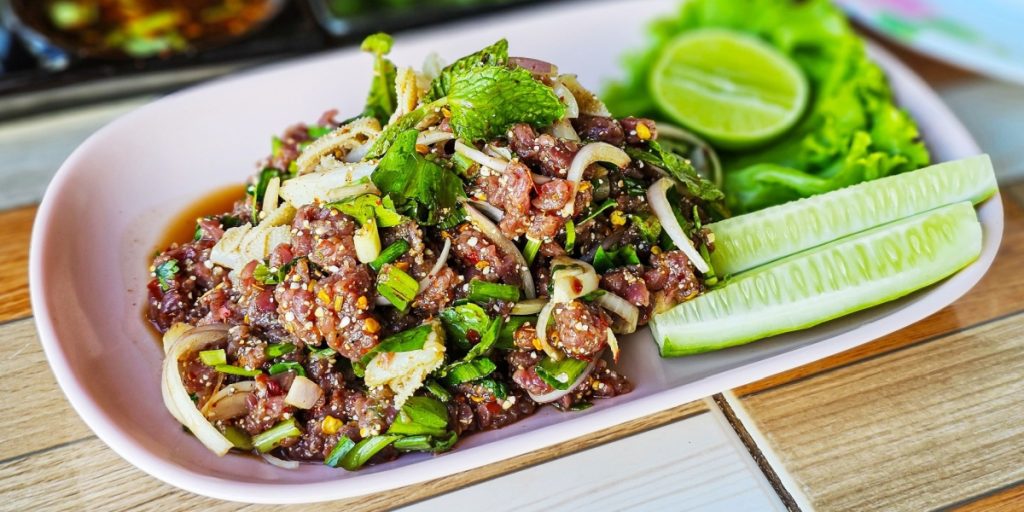Koi Pla, a traditional dish enjoyed in Thailand and Laos, is linked to around 20,000 deaths annually.
Others are reading now
Koi Pla is a traditional dish in Thailand and Laos. Despite being responsible for around 20,000 deaths annually, this dish remains strangely popular among the region’s residents.
Among the local population, Koi Pla is considered a salad that consists of minced raw fish, lemon juice, herbs, and spices. It is especially popular in the Isaan region of Thailand and Laos.
As you might have guessed, the raw fish is the problematic ingredient in this dish, though technically, it’s the parasites living in the fish.
Koi Pla is traditionally made from raw freshwater fish from the Mekong basin, which is often infested with parasitic flatworms known as liver flukes.
Also read
These parasites are linked to one of the most aggressive types of cancer: cholangiocarcinoma, or bile duct cancer, causing about 20,000 deaths in Thailand each year.
The Silent Killer
Dr. Narong Khuntikeo, a liver surgeon at Khon Kaen University, has been raising awareness about the dangers of Koi Pla.
“It’s a very big health burden around here,” Khuntikeo told Agence France-Presse. “But nobody knows about this because they die quietly, like leaves falling from a tree.”
Having lost both his parents to bile duct cancer after years of eating Koi Pla, Dr. Khuntikeo has dedicated much of his career to educating people in Thailand’s rural northeast about the risks of this dish.
Resistance to Change
Despite the health risks, Koi Pla remains popular.
Some people dismiss the dangers, saying, “Oh well, there are many ways to die,” while others argue that cooking the fish ruins the dish’s taste.
Older generations are particularly resistant to giving up this traditional dish, but health professionals like Dr. Khuntikeo hope to convince the younger generation to avoid it.
A single mouthful of Koi Pla can be enough to cause bile duct cancer, a disease known as the “silent killer” due to its low survival rates without surgery.
Isaan, Thailand’s largest province, has the highest incidence of bile duct cancer in the world, largely due to the popularity of Koi Pla.
Dr. Khuntikeo’s research among villagers in the Isaan province found that up to 80% had ingested liver flukes. While not all of them developed bile duct cancer, the risk is still high.
His efforts focus on testing and educating the population to reduce the incidence of this deadly disease.


